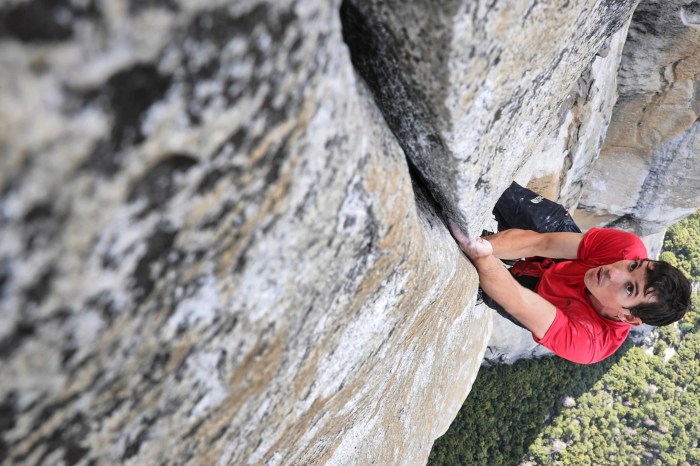A mountain climber ascends a mountain to its peak, a journey that tests both physical and mental limits. It is a pursuit that demands meticulous preparation, unwavering determination, and an intimate understanding of the mountain’s treacherous terrain. Embarking on this arduous expedition, climbers confront formidable obstacles and experience profound transformations that forge an enduring bond between themselves and the mountain they conquer.
From the first step at the mountain’s base to the triumphant moment at its summit, this ascent is a captivating narrative of human resilience and the indomitable spirit of adventure.
1. Introduction: A Mountain Climber Ascends A Mountain To Its Peak

Mountain climbing, an exhilarating and demanding sport, has captivated adventurers for centuries. It involves ascending mountains using various techniques, requiring physical endurance, mental resilience, and technical expertise. The allure of reaching a mountain’s peak, with its panoramic views and sense of accomplishment, has driven countless individuals to embark on this challenging pursuit.
2. Preparation and Planning
Preparation is crucial for a successful mountain ascent. Climbers must undergo rigorous physical training to build strength, endurance, and agility. Mental preparedness is equally important, as climbers face unpredictable weather, physical discomfort, and potential hazards. Route selection and weather forecasting are essential, as climbers must choose paths that match their abilities and avoid adverse conditions.
- Physical training: Building strength, endurance, and agility
- Mental preparation: Developing resilience, focus, and determination
- Route selection: Choosing paths that align with abilities and experience
- Weather forecasting: Monitoring conditions to avoid hazards and ensure safety
3. The Ascent
The ascent of a mountain is a multi-stage journey. Climbers navigate varying terrain, from rocky trails to steep slopes and icy summits. They endure physical challenges such as fatigue, altitude sickness, and exposure to extreme temperatures. Mental fortitude is tested as climbers overcome obstacles and push their limits.
- Initial ascent: Overcoming physical and mental challenges
- Mid-ascent: Battling fatigue and altitude sickness
- Final ascent: Pushing limits and conquering the summit
4. The Peak
Reaching the summit of a mountain is a profound experience. Climbers are rewarded with breathtaking views, a sense of accomplishment, and a renewed appreciation for nature. The peak offers a moment of reflection and gratitude, as climbers take in the fruits of their labor.
5. The Descent
Descending a mountain requires as much caution and skill as the ascent. Climbers must navigate steep slopes, loose rocks, and potential hazards. They use controlled techniques to maintain stability and avoid injury. Safe descent ensures a successful completion of the climb.
6. The Aftermath
After completing a mountain ascent, climbers experience a sense of accomplishment and fulfillment. The physical and emotional recovery process begins, as they rest and rehydrate. Climbers often share their experiences with others, recounting their challenges and triumphs.
7. Safety Considerations
Safety is paramount in mountain climbing. Climbers must be aware of potential hazards such as rockfalls, avalanches, and lightning. They must wear appropriate gear, follow established guidelines, and be prepared for emergencies. Responsible climbing practices ensure the well-being of climbers and the preservation of the mountain environment.
- Hazard awareness: Identifying and mitigating risks
- Proper gear: Wearing helmets, harnesses, and protective clothing
- Established guidelines: Following designated routes and respecting wildlife
- Emergency preparedness: Carrying first-aid kits and communication devices
8. Gear and Equipment, A mountain climber ascends a mountain to its peak
Essential gear for mountain climbing includes:
| Item | Purpose |
|---|---|
| Backpack | Carrying supplies and equipment |
| Boots | Providing ankle support and traction |
| Ice axe | Ascent and descent on icy slopes |
| Crampons | Providing grip on icy surfaces |
| Helmet | Protecting the head from falling rocks and debris |
| Harness | Securing climbers during falls or rescues |
| Rope | For safety and rescue operations |
| First-aid kit | Treating minor injuries |
9. Training and Fitness
Physical fitness is crucial for mountain climbing. Climbers must develop endurance, strength, and flexibility. A comprehensive training plan includes:
- Cardiovascular training: Running, cycling, or swimming
- Strength training: Weightlifting or bodyweight exercises
- Flexibility training: Yoga or stretching
10. Nutrition and Hydration
Proper nutrition and hydration are essential for mountain climbers. A balanced diet provides the energy and nutrients needed for sustained exertion. Climbers must consume ample water and electrolytes to prevent dehydration and maintain performance.
- Nutritional needs: Carbohydrates, protein, and fats
- Hydration: Drinking water and electrolyte-rich beverages
Frequently Asked Questions
What are the primary challenges faced by mountain climbers?
Mountain climbers encounter a range of challenges, including extreme weather conditions, altitude sickness, treacherous terrain, rockfalls, avalanches, and the sheer physical demands of the ascent.
How do climbers prepare for a mountain ascent?
Preparation is crucial for a successful ascent. Climbers engage in rigorous physical training, study weather patterns, select appropriate gear, and acclimatize to the altitude to minimize the risk of altitude sickness.
What is the significance of reaching the summit?
Reaching the summit is a profound experience that symbolizes triumph over adversity and a deep connection with nature. It is a moment of exhilaration, accomplishment, and reflection.

